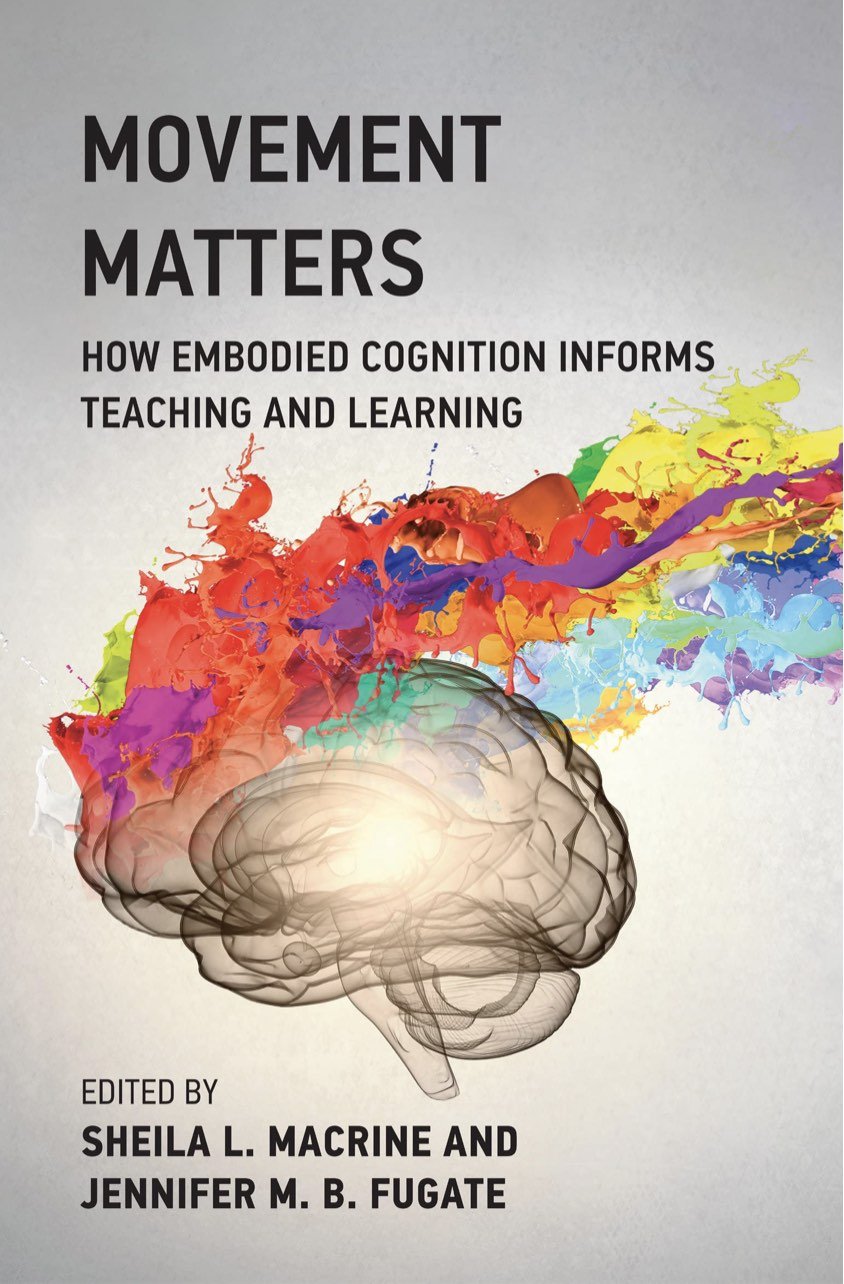
Cognitive psychology has undergone a paradigm shift in the ways we understand how knowledge is acquired – away from brain-bound models towards an embodied view. Learning occurs through the body and is grounded in both perception and action. That is, cognition is deeply dependent upon the learner’s physical experiences. Embodied learning shifts the focus from an exclusively mental effort toward an embodied, sensory-rich experience, offering new strategies to maximize learning effectiveness.
Yet the implications for how this shift in the science of learning impacts students’ learning has yet to be fully realized. While we have made great advancements in the learning sciences over the past 30 years, there has been relatively little change in educational pedagogy. In most instances, education is still de-contextualized and full of disembodied learning methods, with the teacher as a ‘talking head’ transmitting the curriculum, and the students as passive recipients. Disembodied approaches include rote memorization, mindless drills, and skills, with a focus on standardized testing. Schools, whether conscious of it, still separate the mind from the body. In the following series of blogs, some of our esteemed authors share with you their research on embodied learning for the classroom.
Our book culminated in us (Macrine & Fugate, 2021) creating the Translational Learning Sciences Research for Embodied Cognition and Embodied Learning1, adapted a model of translational science (Rubio et al., 2010). Our model leverages the empirical findings on embodied cognition to inform developmental, cognitive, educational psychology, and learning theory, and to provide an overarching theory for why embodied-based learning works. The call for translational research for the benefit of education is not new, although the term translational is only recently applied in fields other than the natural sciences. The overarching goal of our model is to accelerate the process of transforming laboratory discoveries into new pedagogical approaches to improve learning outcomes. Specifically, we outline seven goals: (1) making sense of and disseminating clinical and empirical research findings; (2) closing the gap between research and application; (3) combining cognitive psychology and pedagogy to share pertinent information; (4) improving teaching and learning through embodied applications; (5) confirming or debunking current trends; (6) elucidating conceptual frameworks for sensorimotor and body-based learning; and (7) recommending curriculum, designs, technology, and development to inform policy.
The purpose of our book, Movement Matters: How Embodied Cognition Informs Teaching and Learning (MIT Press, 2022) was to synthesize embodied cognition research, apply it to the classroom, and advance the communication among individual silos of embodied research. The goal of this book was to highlight the pertinent and emerging research on how to integrate embodied cognition across content areas. For example, James (chapter 4) illustrates that early handwriting practice leads to better letter recognition and literacy development. Gómez and Glenberg (chapter 5) show how vocabulary acquisition can be enhanced by shared communication, simulation, physical pantomime or gesture, and/or grounding of information to concrete objects. Boaler (chapter 8) shows how finger perception predicts learning math all the way through college. In chapter 10, Marquardt Donovan and Alibali describe the importance of affordances in “manipulatives” (physical objects that can be touched and moved with the hands during problem solving and learning). In chapter 13, Tancredi and colleagues show how students with learning differences learn differently through their bodily capabilities, and they invent adaptive embodied interventions that are available for differently-abled individuals. In chapter 16, Butera & Aziz-Zadeh show the importance of the mirror neuron system for imitative learning, and show that this system appears to play a fundamental role in both action understanding and imitation. Davis and colleagues (Chapter 17) explores how the conceptual system is attuned to motor differences in individuals on the autism spectrum. In the last chapter (18), Fugate & Wilson-Mendenhall share embodied approaches to improving emotional well-being, namely how attention and disambiguation of affective states through mindfulness and increased emotional granularity.


